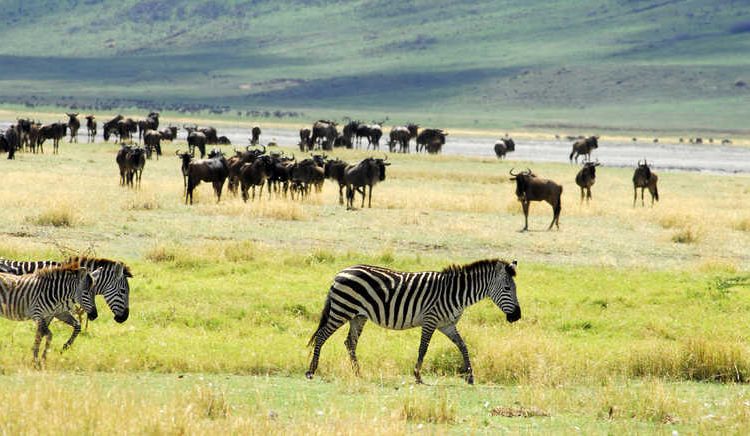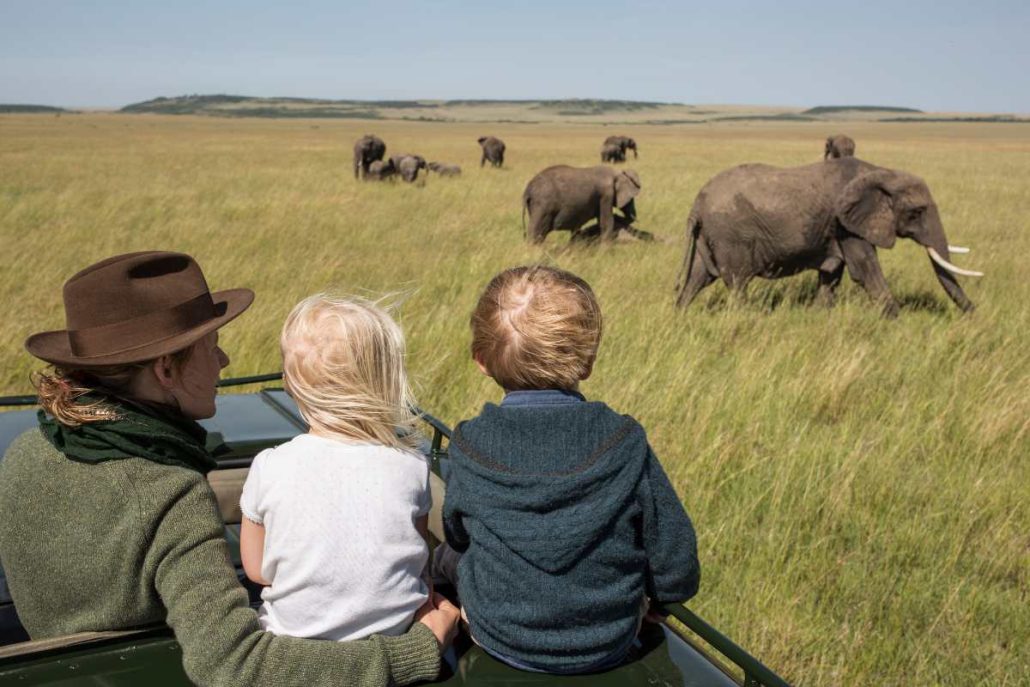Friendly Tanzania safari : Tanzania boasts more than 22 game reserves and national parks that were created to protect its wildlife. Millions of wildebeest call it home, and each year they migrate in large numbers between Tanzania’s Serengeti National Park and Kenya’s Maasai Mara National Park. Continue reading this article to find out about our friendly Tanzania safari

Suitable for families, Tanzania is one of the most popular safari locations in Africa. Its main wildlife areas are the Ngorongoro Crater, Lake Manyara National Park, Tarangire National Park, and Serengeti National Park. Let’s examine what Tanzania has to offer families going on a safari as well as an example Tanzania safari itinerary.
Why should you take kids on a Tanzania safari?
Make sure to inquire about any age limits when organizing your safari and reserve a package that includes accommodation that is suitable for little children. These camps and lodges frequently offer fantastic kid-focused activities to ensure that kids enjoy an incredibly engaging stay.
What does Tanzania have in store for kids?
They can take in breathtaking views of the local wildlife; nothing compares to seeing Tanzania’s native species up close and personal with informed and engaging guides.
If they’re extremely fortunate, they may get to see lions or leopards hunting in the wild, which is a real-time demonstration of the natural world in action.
They can spot other creatures such as giraffes eating on the leaves of the upper branches of trees, elephants congregating around water holes to drink, and possibly even the uncommon and endangered rhinoceros.
See the magnificent Great Migration each year at the Serengeti National Park, a stunning natural spectacle that should not be missed (but make sure you go during the right months).
Children can enjoy the amazing marine life found in the Indian Ocean waters surrounding Zanzibar, including bottlenose dolphins, sea turtles, humpback whales, and white tip reef sharks, if they venture to the coast.
These encounters will leave them with enduring memories of their time spent exploring Tanzania’s national parks, and they might even develop an interest in wildlife preservation and planning other safaris and trips.
Children’s activities abound in accommodation and safari packages; these include cooking classes, cycling trips, bush walks, information centers, camping, archery lessons, stargazing, balloon safaris, and animal tracking classes with locals.
Is Tanzania safe for children?
Because they are afraid of putting their kids too close to wild creatures, parents may be hesitant to take their kids on wildlife safaris. Keep in mind that you will be escorted by professionally qualified safari guides and that Tanzanian park authorities have put in place stringent security and safety measures.
When on safari, make sure you constantly adhere to the rules and regulations to keep everyone safe.
Pay close attention to your children and make sure they don’t traverse off if they spot an animal. Always stay with the group and follow the instructions provided by the safari guide.
Stay within the limits of the lodge/camp you are staying at. Do not go outside after dark unless you have an escort.
On a game drive, make sure that your children stay seated in the vehicle. Talk to your safari guide in advance about scheduled toilet breaks.
In addition, make sure you tailor your friendly Tanzania safari to the age of the children. Some safari activities can take longer and require more patience. For example, spending an entire day tracking the wildebeest migration, spending quiet time in a hide, or going on a walking safari may be too strenuous for younger children. Make sure the activities correspond to your child’s age and that you are aware of them. Kids who are older than nine should generally be able to participate in most events; just be aware of their limitations and make sure they are entertained.
You and your children will be safe and have a great time on your safari excursion if you abide by these regulations.

6 days family friendly Tanzania safari.
Day 1: Meet & Greet at Kilimanjaro Airport, drive to Arusha.
After meeting you at the airport, a Focus east Africa Tour guide will welcome you and will transport you to your Arusha resort. You’ll have plenty of time to change and get comfortable after arriving. You will receive a briefing from your safari guide outlining the schedule of events for the next six days. After that, you can unwind and tour the lodge in order to get ready for your upcoming safari.
Day 2: Drive to Tarangire National Park and Tarangire River.
After breakfast, your guide will come to the resort to collect you and drive you to Tarangire National Park, the first stop on your safari. After arriving in the early afternoon, you’ll ride in a game viewing vehicle to explore Tarangire National Park and the Tarangire River. The inhabitants of Tarangire will be visible to the children, including flamingos, elephants, zebras, giraffes, blue monkeys, black and white colobus monkeys, and many more. An exciting first time on safari.
You may even catch a glimpse of the elusive leopard on your evening drive to the resort. Before going to bed, you will have time to discuss about your exciting day, have a satisfying lunch, and freshen up. A fresh experience awaits us the next day this time in the Serengeti National Park.
Day 3: Drive to Serengeti National Park, visit Olduvai Gorge.
Leaving Serengeti National Park right after breakfast means an early start to your day. You can stop at the Olduvai Gorge along the journey, which provides children with an amazing educational experience. Visit Olduvai Gorge, often referred to be the cradle of mankind, to learn about our prehistoric predecessors. After travelling to the Serengeti National Park, have an outdoor meal before going on a late-afternoon or nighttime game drive. When the nocturnal animals begin waking up in the evening, the Serengeti is equally intriguing. Ready for the events of the following day, you retire to your lodge for dinner and a restful night’s sleep.
Day 4: A Full Day Exploring Serengeti National Park.
Taking a full day game drive in the amazing Serengeti National Park to witness the abundance of wildlife and birds is an unforgettable safari experience for everyone, no matter when they visit. The annual wildebeest migration, which takes place every year as antelopes from Tanzania’s Serengeti National Park and Kenya’s Maasai Mara National Reserve migrate in search of rich grasslands, may be seen depending on the time of year.
You may be able to witness the wildebeest migration along the Grumeti River if you visit between June and July. During this time of year, there should be plenty of opportunity to see the herds as they make their way towards the river, which is stretched across the huge Serengeti plains. During September, the northern part of the park offers a sighting of the wildebeest crossing the Mara River. The southern plains of the Serengeti will be bursting with young wildebeest if your visit falls between the January and February wildebeest calving season.
You go on an exploration of the Serengeti kopies in the early afternoon, which is an ideal time to see predators that are waiting for their food. After a full day of exciting experiences, head back to your lodging for a delectable dinner and conversation.
Day 5: Drive to Ngorongoro Crater.
This will be your last day of wildlife viewing in the morning as you explore Serengeti National Park. After that, your kids can participate in an optional cultural trip at a Maasai Boma, where they can see how the locals milk their cattle and see a Maasai traditional dance. This is a wonderful chance for them to understand more about the way of life in the area. You’ll be in your lodge by dusk, enjoying dinner and getting a good night’s sleep in preparation for your journey to the crater the following day.
Day 6: Explore the Ngorongoro Crater, drive to the airport.
You and the family will explore the magnificent Ngorongoro Crater and the adjacent Conservation Area on your final safari day in Tanzania. The crater floor offers excellent opportunities for wildlife viewing due to its remarkable diversity and concentrated populations of most of the notable wildlife species found in the Serengeti, including the well-known Big Five. The crater rim offers breathtaking views of the dormant volcano. You return to Arusha for a drop-off at your accommodation or the airport after eating lunch in the crater. All that’s left to do is bid your guide farewell and begin organizing your upcoming safari experience!
In summary, the above article entails all you need to know about our Friendly Tanzania safari


